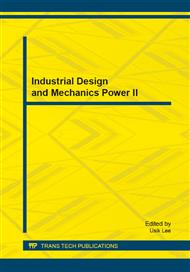[1]
Zhao Guoliang, Wu Tao, Summarization for Development and Application Status of HVDC Technology, North China Electrical Power, China, no. 8, p.28–34, (2006).
Google Scholar
[2]
Yu Qun, Wang Ya-di, Han Ji-hong, Zhang Chun-xia, Liu Min, Development of the BLT equation in the time domain and its application in line, Systems Engineering and Electronics, China, vol. 33, no. 11, p.2373–2376, (2011).
Google Scholar
[3]
LIU Sheng, GE Ya-ming, LI Jun, Coupling Response Simulation of Transmission Lines Excited by Plane Wave, Journal of System Simulation, China, vol. 20, no. 6, pp: 1619–1622, (2008).
Google Scholar
[4]
Rogard E, Azanowsky B, Ney M M. Comparison of radiation modeling technique technique up to 10GHz–application on a microstrip PCB trace, IEEE Trans. on Electronmagnetic Compatibility, vol. 52, no. 2, p.479–486, (2010).
DOI: 10.1109/temc.2010.2046170
Google Scholar
[5]
Guillaume Andrieu, Alain Reineix, Xavier Bunlon, Jean-Philippe Parmantier, Lamine Kon´e, Bernard D´emoulin. Extension of the Equivalent Cable Bundle Method for Modeling Electromagnetic Emissions of Complex Cable Bundles, IEEE Trans. On Electronmagnetic Compatibility, vol. 51, no. 1, p.108–118, (2009).
DOI: 10.1109/temc.2008.2007803
Google Scholar
[6]
M. Leone, Closed-form expressions for the electromagnetic radiation of microstrip signal traces, IEEE Trans. Electromagn. Compat., vol. 49, no. 2, p.322–328, May (2007).
DOI: 10.1109/temc.2007.897125
Google Scholar
[7]
Phumin Kirawanich, Susumu J. Yakura, Naz E. Islam, Simulating Large Electrical Systems for Wideband Pulse Interactions Using the Topological Modular Junction Concept, IEEE Trans. on Plasma Science, vol. 36, no. 2, p.435–442, (2008).
DOI: 10.1109/tps.2008.918767
Google Scholar
[8]
Ying Li, Gu yan Ni, Jian shu Luo, Xu feng Zhang, Ji yuan Shi, The terminal responses of the two-wire transmission line in a cavity with apertures illuminated by a plane wave, Proc. of the 3rd IEEE International Symposium on Microwave Antenna propagation an EMC Technologies for Wireless Communications, p.1142–1146, (2009).
DOI: 10.1109/mape.2009.5355889
Google Scholar
[9]
Andrew C. Marvin, John F. Dawson, Simon Ward, Linda Dawson, Janet Clegg, Axel Weissenfeld, A Proposed New Definition and Measurement of the Shielding Effect of Equipment Enclosures, IEEE Transactions on Electromagnetic Compatibility, August, vol. 46, no. 3, p.459.
DOI: 10.1109/temc.2004.831901
Google Scholar
[10]
Cuiliu Liu, Weidong Zhang, Xiang Cui, Simulation on Electromagnetic Radiation of High Voltage Converter Station valves, Sixth International Conference on Electromagnetic Field Problems and Applications (ICEF),Dalian, Liaoning, p.1–4, 2012.
DOI: 10.1109/icef.2012.6310379
Google Scholar
[11]
Martin Paul Robinson, Trevor M. Benson, Christos Christopoulos, John F. Dawson, M. D. Ganley, et, al, Analytical Formulation for the Shielding Effectiveness of Enclosures with Apertures, IEEE Transactions On Electromagnetic Compatibility, vol. 40, no. 3, p.240–248, august (1998).
DOI: 10.1109/15.709422
Google Scholar


